John Hurrell – 23 March, 2024
These exhibited canvases, prints and floor receptacles are displayed inside the gallery and out. All are accompanied by an incisive black humour, an interest in scrappy abject objects, a jaundiced referencing of economic theory, mocking bureaucracy—and using slithery, ambiguously chosen but straight-faced language. Deep ambivalences exist—some heavy. One work suggests art purchasers might be cockroaches.
In this third show at Treadler, a new little gallery tucked away on the southern side of K’Rd behind its ubiquitous shops, cafes and tattoo parlours, we find a mini-survey from Shiraz Sadikeen of a dozen wall and floor works: some new, others shown before but now realigned, altered or reorganised, or sometimes dismantled to be fragments collectively regrouped.
Sadikeen is known for the carefully loaded and gathered meanings of his unusual materials or commonplace items (such as crumbled incense, date pits and lock components), statistical diagrams, and sprightly realignments of the ordinary, incorporating also used tools and abandoned commercial products.
These exhibited canvases, prints and floor receptacles are displayed inside the gallery and out. All are accompanied by an incisive black humour, an interest in scrappy abject objects, a jaundiced referencing of economic theory, showcasing the labour of art production, mocking bureaucracy—and using slithery, ambiguously chosen but straight-faced language. Deep ambivalences exist; some heavy. One work suggests art purchasers might be cockroaches.
In mindset, these are often a sort of playful (but at times caustic) rebus where pungent associations (of say body parts) are mixed with love of tactile materiality. Deliberately scruffy but meticulously planned, and exploiting double meanings of commonplace words like ‘date’, ‘handle’, ‘natural’ or ‘washer’.
Sadikeen seems to gravitate towards what is normally invisible or deemed ‘disgusting’ or ‘unworthy’, avoiding connotations of dignity or respectful high regard; going to the opposite pole of potential repulsion—showing the influence of Georges Bataille perhaps, while nodding too to Art History (Klee, Dubuffet), Cultural Criticism (Benjamin) and Social History (Trotsky). All stirred into an allusive commentary on the act of interpretation itself and the pressures of the passing of time, where volatile semantic juxtapositions are thoroughly anticipated.
A good example is the dollar coin with the Queen’s head removed via a neat circular hole now replaced by bone wax which symbolises a new stabilising armature. The ‘empty’ Washer is made frictionless via the slippery wax which being translucent is almost transparent but not quite. Economic and legal structures persist as always, even though their history and presence is now not bluntly stated. Plus the impending death of the monarchy is also suggested.
Another work, Mug, is a cup his mother sent him, with its outside reminding him of Bismillah, and the act of regularly invoking the Holy Name of Allah. It contains part of a lock, hinting at the power of social (family or community) pressure, and date pits (alluding to the restricting exigencies of time). Here Duchampian language structures critique enforcible religious mores.
Most of his works are like this, being crammed with parallel meanings waiting to be dug out, this compression achieved through deft ambiguous drawing (Plume), deceptively simple yet punchy language (Mug), acerbic political narrative (The Natural Rate (Composition with Philips Curve)), and associations from the mentioned, clearly significant, juxtapositions of materials or objects (bone wax, coins, deadbolt, tobacco, clockface). All inviting prolonged cogitation as ‘mindfood’, yet cunningly, also deeply sensual for observant lovers of textural surface and understated colour.
John Hurrell
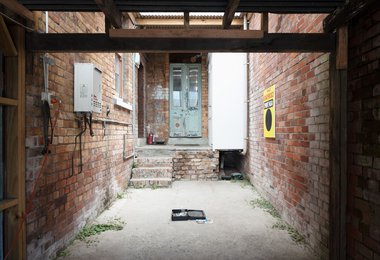

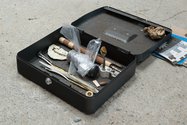
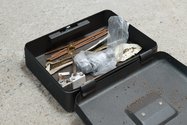

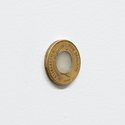
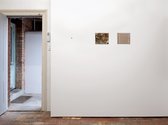
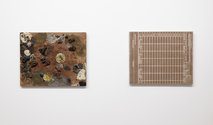

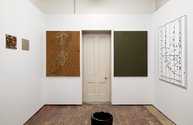

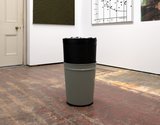
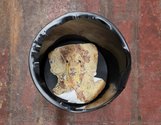
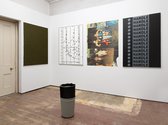


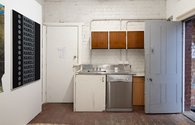
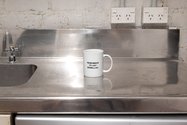
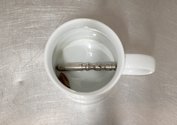
 Advertising in this column
Advertising in this column Two Rooms presents a program of residencies and projects
Two Rooms presents a program of residencies and projects



This Discussion has 0 comments.
Comment
Participate
Register to Participate.
Sign in
Sign in to an existing account.